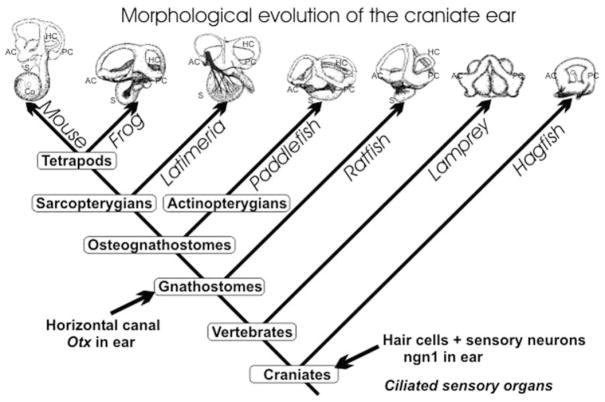Figure 2.
The morphogenetic evolution of the vertebrate ear is shown. How ciliated mechanosensory cells became associated with this morphogenetic process remains unclear. However, the living vertebrates display a morphocline of increasing complexity in the vestibular system that peaks with the nine distinct sensory receptors in some amphibians. Tetrapods, and possibly the coelacanth Latimeria, have evolved a basilar papilla in addition to the vestibular receptors. The major morphogenetic progress of the vestibular system was the split of the single torus of hagfish into two semicircular canals in lampreys and the formation of a horizontal canal in all gnathostomes ( jawed vertebrates). It is likely that expression of Otx1 was essential for the evolution of the horizontal canal. AC, anterior crista; Co, cochlea; HC, horizontal canal and crista; PC, posterior crista; S, sacculus.

